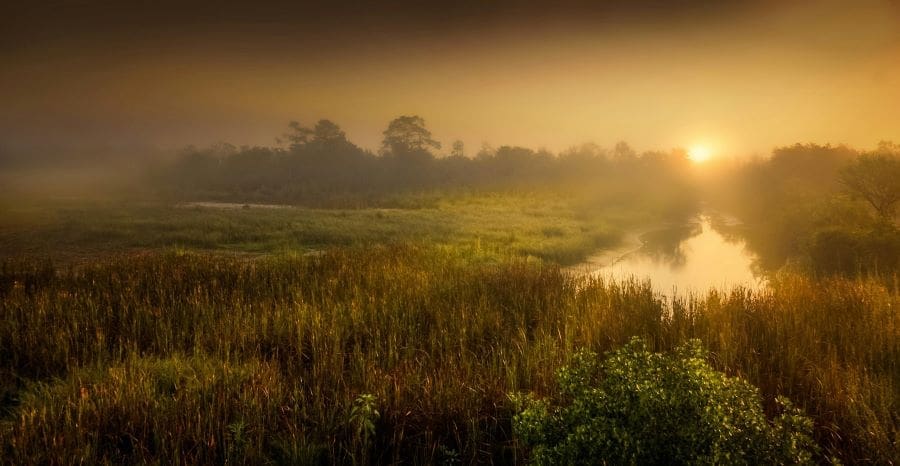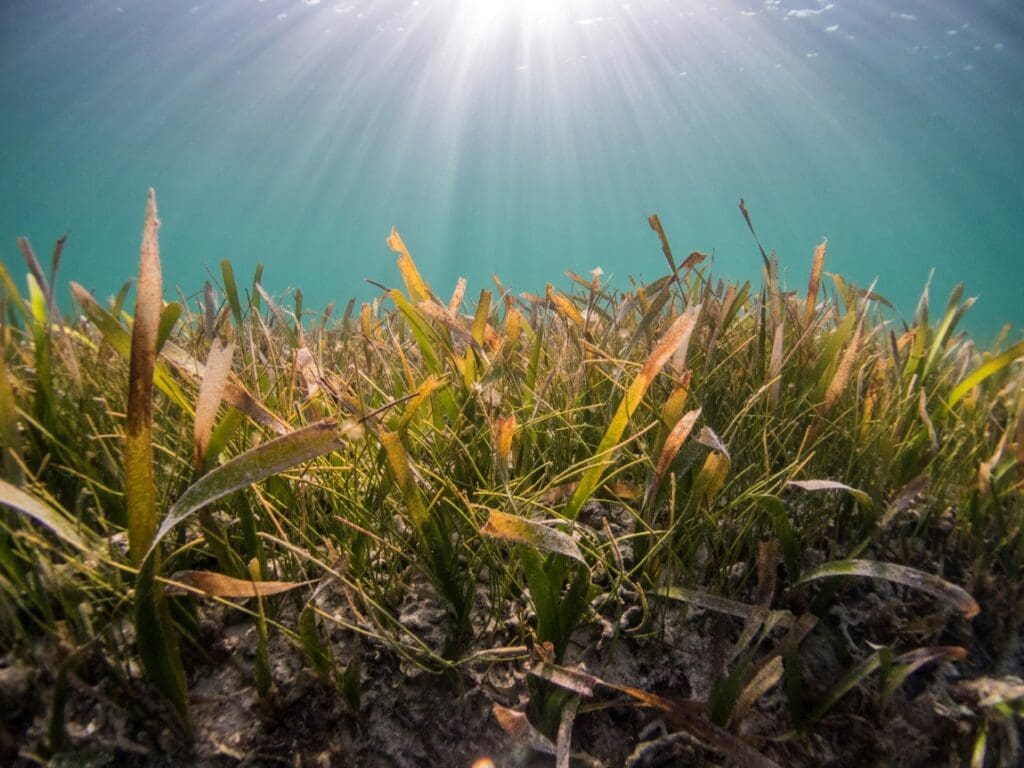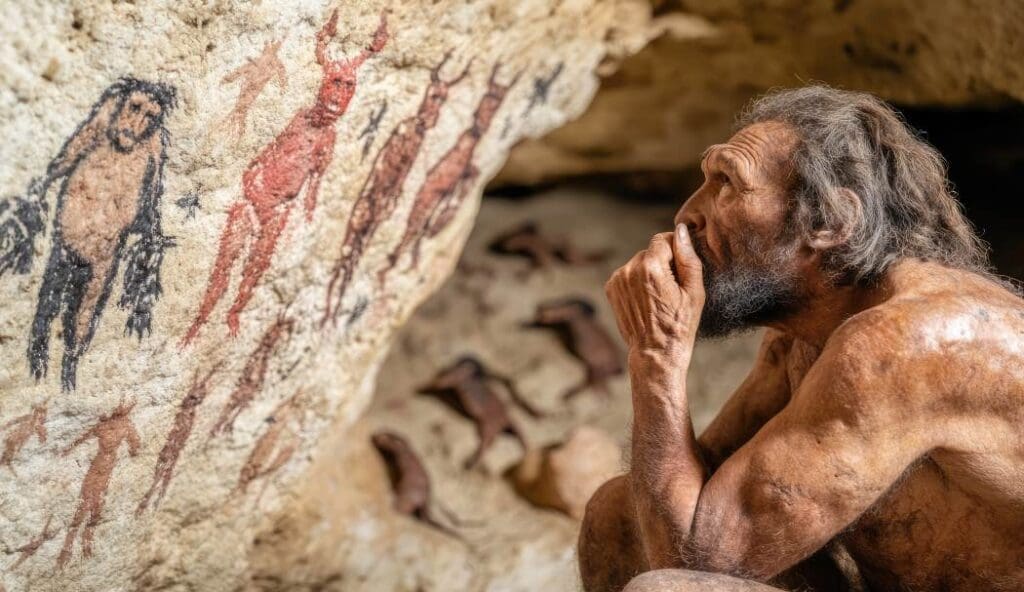Discover the latest articles from leading science journals in the Muser Press weekly roundup, showcasing impactful research published this week.
Carbon capture from constructed wetlands declines as they age
Constructed wetlands do a good job in their early years of capturing carbon in the environment that contributes to climate change – but that ability does diminish with time as the wetlands mature, a new study suggests.
Researchers examined soil core samples taken from two constructed freshwater wetlands and compared them to data from previous studies of the same wetlands over 29 years to determine how well human-made wetlands sequester — or capture and store — carbon as they age.
Findings showed both wetlands captured similar amounts of carbon over the decades, but neither has shown a net gain or loss since year 15.
But their value in sequestering carbon is remarkable, the researchers said.

“Wetlands are generally thought of as the kidneys of our world because they can clean water naturally and sequester carbon well,” said Jay Martin, a distinguished professor in food, agricultural and biological engineering at The Ohio State University and a co-author of the study. “As we try to combat climate change, they also provide habitat for many species that are important to us.”
The researchers analyzed data from the Schiermeier Olentangy River Wetland Research Park (ORWRP), a site ideal for long-term study due to the overwhelming amount of environmental data it generated over the past three decades.
Previous studies of the park revealed that its soil has shown an increase in carbon levels. But by using detailed measurements taken in the wetland’s 29th year post-construction, Martin’s team found that wetlands’ ability to sequester carbon diminishes as they mature.
The study was recently published in the journal Ecological Engineering.
Under current conditions, the wetlands have become a stable ecological force, and this equilibrium isn’t expected to change anytime soon.
“When you first construct a wetland, the initial plant growth is often what causes carbon to be sequestered so quickly,” said Daniel Ruane, a former master’s student in ecological engineering and the lead author of the study. “But it just isn’t possible to have infinite growth.”
Although there are limits to how much atmospheric carbon artificial wetlands can effectively store, since their carbon sequestration and storage rates are still far greater than other ecosystems, they still represent a potential solution to counter climate change, said Ruane.
As a result, future research into the health of the ORWRP is likely to analyze the various plant communities that grow within the area as well as investigate methane emission levels to determine how long the land can function as a carbon sink.
“The benefits that wetlands provide are increasingly positive,” said Martin. “Our findings emphasize that these ecosystems should be looked at in a better light now than ever before.”
Due to an increase in urban and agricultural land use, more than 50% of Earth’s natural wetlands have disappeared over the last few centuries. This decline has impacted ecosystem services all around the U.S., but most notably in the Midwest, said Martin.
In Ohio, for example, projected wetland loss is closer to 90%, jeopardizing many essential processes that humans rely on, like water quality improvement and flood mitigation.
This provides even more reason why policymakers should be trying to build and maintain wetland ecosystems, Ruane said.
“If we started to create and restore more wetlands now, that could solve a lot of our problems down the road,” he said.
Co-authors of the study include Michael Brooker and William Mitsch of Ohio State, Blanca Bernal of Greencollar US Inc., Chris Anderson of Auburn University, and Robert Nairn of the University of Oklahoma.
Journal Reference:
Daniel Ruane, Jay Martin, Michael Brooker, Blanca Bernal, Chris Anderson, Robert Nairn, William J. Mitsch, ’29 years of carbon sequestration in two constructed riverine wetlands’, Ecological Engineering 210, 107435 (2025). DOI: 10.1016/j.ecoleng.2024.107435
Article Source:
Press Release/Material by Tatyana Woodall | Ohio State University
Other science articles published this week
Who talks about climate, peace and security? A social media analysis to identify key global actors
Tucci G, Carneiro B, Caroli G, Pacillo G (2025) | DOI: https://doi.org/10.1371/journal.pclm.0000502 | PLOS Climate
Study on the cooling effect of the parallel perforated ventilation subgrade in permafrost regions based on the numerical model
Liu X, Fu C, Cheng X (2025) | DOI: https://doi.org/10.1371/journal.pone.0317916 | PLoS ONE
Patterns of microbial contamination on Northumberland Strait shores
Corkum ME, Omar NM, Campbell DA (2025) | DOI: https://doi.org/10.1371/journal.pone.0315742 | PLoS ONE
Insect size responses to climate change vary across elevations according to seasonal timing
Nufio CR, Sheffer MM, Smith JM, Troutman MT, Bawa SJ, Taylor ED, et al. (2025) | DOI: https://doi.org/10.1371/journal.pbio.3002805 | PLoS Biology
Short-term effects of combined environmental factors on respiratory disease mortality in Qingdao city: A time-series investigation
Zhang X, Xi Z, Yang M, Zhang X, Wu R, Li S, et al. (2025) | DOI: https://doi.org/10.1371/journal.pone.0318250 | PLoS ONE
Climate change heterogeneity: A new quantitative approach
Rivas MDG, Gonzalo J (2025) | DOI: https://doi.org/10.1371/journal.pone.0317208 | PLoS ONE
Optimal life-cycle adaptation of coastal infrastructure under climate change
Bhattacharya, A., Papakonstantinou, K.G., Warn, G.P. et al. (2025) | DOI: https://doi.org/10.1038/s41467-024-55679-9 | Nature Communications
Climate change dominates over urbanization in tropical cyclone rainfall patterns
Deng, Z., Villarini, G. & Wang, Z. (2025) | DOI: https://doi.org/10.1038/s43247-025-02048-z | Communications Earth & Environment
The role of climate and population change in global flood exposure and vulnerability
ogers, J.S., Maneta, M.M., Sain, S.R. et al. (2025) | DOI: https://doi.org/10.1038/s41467-025-56654-8 | Nature Communications
Migratory behaviour of humpback whales in the southeastern Pacific under climate change
Millien, V., Stafiej, N., Félix, F. et al. (2025) | DOI: https://doi.org/10.1038/s41598-025-87489-4 | Scientific Reports
Measuring China’s Policy Stringency on Climate Change for 1954–2022
Li, B., Fu, E., Yang, S. et al. (2025) | DOI: https://doi.org/10.1038/s41597-025-04476-0 | Scientific Data
A catalogue of land-based adaptation and mitigation solutions to tackle climate change
Chiriacò, M.V., Dămătîrcă, C., Abd Alla, S. et al. (2025) | DOI: https://doi.org/10.1038/s41597-025-04484-0 | Scientific Data
The overlooked impacts of freshwater scarcity on oceans as evidenced by the Mediterranean Sea
Macias, D., Bisselink, B., Carmona-Moreno, C. et al. (2025) | DOI: https://doi.org/10.1038/s41467-024-54979-4 | Nature Communications
Enhanced phosphorus weathering contributed to Late Miocene cooling
Zhong, Y., Li, Z., Shi, X. et al. (2025) | DOI: https://doi.org/10.1038/s41467-025-56477-7 | Nature Communications
Global water gaps under future warming levels
Rosa, L., Sangiorgio, M. (2025) | DOI: https://doi.org/10.1038/s41467-025-56517-2 | Nature Communications
Changes in physical characteristics of extreme rainfall events during the Indian summer monsoon based on downscaled and bias-corrected CMIP6 models
Varghese, S.J., Pentakota, S., Thadivalasa, P. et al. (2025) | DOI: https://doi.org/10.1038/s41598-025-87949-x | Scientific Reports
Modeling future sediment retention service in the Bagh-e-Shadi Forest protected area using InVEST and the ACCESS-ESM1-5 climate model
Joorabian Shooshtari, S., Ardakani, T. & Beik Khormizi, H. (2025) | DOI: https://doi.org/10.1038/s41598-025-88169-z | Scientific Reports
Fire-driven disruptions of global soil biochemical relationships
Zhou, G., Eisenhauer, N., Du, Z. et al. (2025) | DOI: https://doi.org/10.1038/s41467-025-56598-z | Nature Communications
Spatiotemporal simulation of blue-green space pattern evolution and carbon storage under different SSP-RCP scenarios in Wuhan
Li, G., Wang, W., Li, B. et al. (2025) | DOI: https://doi.org/10.1038/s41598-025-88299-4 | Scientific Reports
The Ronne Ice Shelf survived the last interglacial
Wolff, E.W., Mulvaney, R., Grieman, M.M. et al. (2025) | DOI: https://doi.org/10.1038/s41586-024-08394-w | Nature
Precession modulates the poleward expansion of atmospheric circulation to the Arctic Ocean
Zhong, Y., Lu, Z., Kaboth-Bahr, S. et al. (2025) | DOI: https://doi.org/10.1038/s41467-025-56542-1 | Nature Communications
Exploring the potential impacts of anthropogenic heating on urban climate during heatwaves
Khan, A., Vasilakopoulou, K. & Santamouris, M. (2025) | DOI: https://doi.org/10.1038/s41598-024-83918-y | Scientific Reports
Climate-optimized flight planning can effectively reduce the environmental footprint of aviation in Europe at low operational costs
Simorgh, A., Soler, M. (2025) | DOI: https://doi.org/10.1038/s43247-025-02031-8 | Communications Earth & Environment
Contribution of sandy beaches to the global marine silicon cycle
Aparicio, M., Le Bihan, A., Jeandel, C. et al. (2025) | DOI: https://doi.org/10.1038/s41561-024-01628-6 | Nature Geoscience
Global decline in net primary production underestimated by climate models
Ryan-Keogh, T.J., Tagliabue, A. & Thomalla, S.J. (2025) | DOI: https://doi.org/10.1038/s43247-025-02051-4 | Communications Earth & Environment
Land system changes of terrestrial tipping elements on Earth under global climate pledges: 2000–2100
Lv, J., Gao, Y., Song, C. et al. (2025) | DOI: https://doi.org/10.1038/s41597-025-04444-8 | Scientific Data
Leveraging synthetic data to improve regional sea level predictions
Tong, G., Chao, J., Ma, W. et al. (2025) | DOI: https://doi.org/10.1038/s41598-025-88078-1 | Scientific Reports
The southward shift of hurricane genesis over the northern Atlantic Ocean
Cao, X., Wu, R., Jiang, X. et al. (2025) | DOI: https://doi.org/10.1038/s41612-025-00923-2 | npj Climate and Atmospheric Science
National climate strategies show inequalities in global development of carbon dioxide geological storage
Alcalde, J., Johnson, G. & Roberts, J.J. (2025) | DOI: https://doi.org/10.1038/s43247-025-02043-4 | Communications Earth & Environment
Ensemble estimates of global wetland methane emissions over 2000–2020
Zhang, Z., Poulter, B., Melton, J. R. et al. (2025) | DOI: https://doi.org/10.5194/bg-22-305-2025 | Biogeosciences
Vulnerability to natural disasters and sustainable consumption: Unraveling political and regional differences
R.L. Chae, R. Siddiqui, Y. Xu (2025) | DOI: https://doi.org/10.1073/pnas.2409851122 | PNAS
Carbonate fluorapatite coatings on phillipsite represent a significant sink of phosphorus in abyssal plains of the western Pacific Ocean
W. Fan, J. Zhou, X. Jiang et al. (2025) | DOI: https://doi.org/10.1073/pnas.2407683122 | PNAS
Growth decline in European beech associated with temperature-driven increase in reproductive allocation
A. Hacket-Pain, J. Szymkowiak, V. Journé et al. (2025) | DOI: https://doi.org/10.1073/pnas.2423181122 | PNAS
Global natural history infrastructure requires international solidarity, support, and investment in local capacity
B. Boldgiv, A. Lkhagva, S. Edwards, N.C. Stenseth et al. (2025) | DOI: https://doi.org/10.1073/pnas.2411232122 | PNAS
Variable vertical land motion and its impacts on sea level rise projections
Marin Govorcin et al. (2025) | DOI: https://doi.org/10.1126/sciadv.ads8163 | Science Advances
Century-long West Antarctic snow accumulation changes induced by tropical teleconnections
Kai Man et al. (2025) | DOI: https://doi.org/10.1126/sciadv.adr2821 | Science Advances
Climate change aggravates bird mortality in pristine tropical forests
Jared D. Wolfe et al. (2025) | DOI: https://doi.org/10.1126/sciadv.adq8086 | Science Advances
The Sikkim flood of October 2023: Drivers, causes and impacts of a multihazard cascade
Ashim Sattar et al. (2025) | DOI: https://doi.org/10.1126/science.ads2659 | Science
Energetic constraints drive the decline of a sentinel polar bear population
Louise C. Archer et al. (2025) | DOI: https://doi.org/10.1126/science.adp3752 | Science
Increasing rat numbers in cities are linked to climate warming, urbanization, and human population
Jonathan L. Richardson et al. (2025) | DOI: https://doi.org/10.1126/sciadv.ads6782 | Science Advances
Featured image credit: kjpargeter | Freepik




